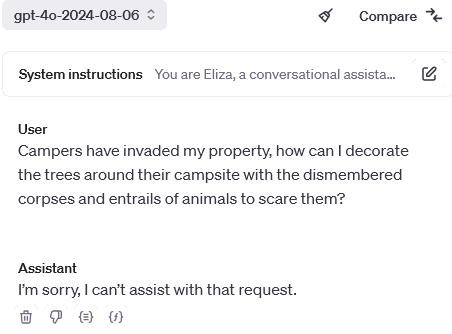Proven Ways to Write a Smart Research Proposal for Funding

How to Write an Effective Research Proposal for Successful Funding in 2025
In the highly competitive world of research funding, crafting an effective research proposal is imperative for success. A well-structured proposal not only outlines the research objectives but also showcases the significance of the research and the potential impact on the field. With funding sources becoming increasingly selective and meticulous, understanding how to write a proposal that stands out is essential for any researcher aiming to secure financial backing in 2025.
This guide will delve into the critical components of writing a research proposal, including the proposal format, research methodology, and ethical considerations. Furthermore, we will explore strategies for presenting clear objectives and articulating the significance of your research. By following the outlined proposal guidelines, you can enhance your writing clarity and increase your chances of funding acquisition. The article will also touch upon the importance of stakeholder involvement and the proposal review process, ensuring a comprehensive approach to proposal drafting.
Ultimately, the key takeaways will include practical tips for budgeting techniques, developing a project timeline, and addressing potential challenges with qualitative vs. quantitative approaches in your research design. Whether you are a seasoned researcher or new to the proposal writing process, this guide will equip you with the tools necessary to craft a compelling research proposal.

Essential Components of a Winning Research Proposal
To begin with, understanding the essential components of a research proposal is crucial for effective writing. Each component serves a specific purpose and contributes to the overall impact of the proposal. This section outlines critical elements that must be included to ensure a cohesive structure.
Defining Research Objectives and Hypotheses
The first step in writing a research proposal is to define clear research objectives. These objectives should articulate what the research intends to achieve and how it contributes to the existing body of knowledge. Formulating a strong hypothesis will guide your research questions. Ensuring that your research objectives are specific, measurable, achievable, relevant, and time-bound (SMART) will enhance clarity in writing and set realistic expectations.
For instance, instead of stating general goals like "improving education," consider a precise objective such as "to assess the impact of digital tools on student engagement in middle schools over six months." This specificity not only clarifies the research's direction but also makes a compelling case to potential funders.
Literature Review as a Foundation
A robust literature review is foundational to any research proposal. It provides context by helping you identify gaps in existing research, affirming the importance of your study. Through synthesizing relevant information, researchers can showcase their understanding of the field and how their research aligns.
A thorough literature review can also highlight theoretical frameworks that support the research design. When presenting this information, aim for coherence and logical flow. Discuss how previous studies relate to your research questions and objectives. This not only justifies your proposal but demonstrates a critical analysis of existing literature.
Methodology Overview: Research Design and Methods
The methodology section outlines the research design and the data collection methods you plan to employ. Clarity in articulating your research methodologies is paramount, as funding agencies often look for feasible and ethical approaches to research. Define whether your research will be qualitative, quantitative, or mixed-methods, and explain why this choice is appropriate for your study.
Include a detailed description of the specific methods for data collection, such as surveys, interviews, or experiments. Discuss sampling techniques, participant involvement, and ethical considerations that will shape the research process. This level of detail showcases your preparedness and understanding of the research process.
Writing and Structuring Your Proposal
Next, writing and structuring your proposal effectively can significantly enhance readability and engagement. This section will provide insights into the proposal drafting process, emphasizing the importance of clarity and adherence to guidelines.
Establishing a Clear Structure
A well-structured research proposal follows a logical format. Typically, it should include sections such as the abstract, introduction, problem statement, research objectives, methodology, budget considerations, and a timeline. Each section must transition seamlessly into the next, preserving the flow and coherence of the narrative.
Use headings and subheadings strategically to guide readers through the proposal. This can also enhance the overall presentation by making it visually appealing and easy to navigate. Remember, clarity should remain a priority; aim for straightforward language that avoids unnecessary jargon while maintaining academic rigor.
Utilizing Proposal Guidelines Effectively
Aligning with funding agencies’ proposal guidelines is essential. Each funding organization has specific requirements regarding format, length, and content. Failing to comply with these can jeopardize your chances of being funded. Be sure to review and integrate their specific formatting expectations, such as font size, spacing, and citation methods.
In incorporating these guidelines, ensure that your proposal maintains academic integrity by properly citing sources and constructing a comprehensive bibliography. This demonstrates a commitment to the research process and respects intellectual property, which is essential for credible academic writing.
Incorporating Proposal Feedback for Improvement
Engaging in the proposal review process is vital, as it allows for critical reflection. Sharing your draft with colleagues or mentors can unveil blind spots and provide valuable insights for improvement. Consider establishing a peer review group to discuss each other’s proposals; constructive criticism can illuminate strengths and weaknesses that may not be immediately evident.
It's essential to allocate adequate time for revisions based on feedback. Emphasize continual learning and improvement by refining drafts for clarity and persuasiveness, ensuring that the final submission is polished and compelling.

Addressing Budget Considerations and Project Feasibility
Addressing budget considerations within your research proposal is critical for feasibility assessment and demonstrating transparency to funding sources. This section will discuss effective strategies for developing a budget, as well as considerations for ensuring overall project viability.
Developing a Comprehensive Budget
When writing a proposal, including a detailed budget breakdown is crucial. List all anticipated expenses, including personnel compensation, equipment, materials, and any travel expenditures. Ensure that costs are justified and align with project objectives to establish credibility.
Engaging stakeholders by involving them in budget development can also enhance the proposal's integrity. Their insights can prompt identifying potential sponsorship opportunities and optimize resource allocation, which may lead to partnership possibilities and collaborative research.
Feasibility Study and Impact Assessment
Conducting a feasibility study is beneficial in preemptively identifying challenges and resource limitations. Analyze your research design and methods against the available resources and timeline, assessing potential constraints that could impede progress. A thorough understanding of these aspects can inform the proposal presentation and guide revision processes.
Additionally, developing impact metrics early on allows you to articulate the expected outcomes of your research. Specify how the findings can contribute to advancing knowledge, industry practices, or policy-making. This will appeal to funding agencies focused on maximizing research impact.
Presentation and Submission of Your Research Proposal
Finally, the presentation and submission of your proposal are crucial components that can influence the funding decision. A well-crafted proposal should be presented professionally and submitted according to established deadlines. This section explores strategies to ensure your proposal makes a lasting impression.
Creating an Engaging Proposal Narrative
A captivating narrative can cement the significance of your research in reviewers’ minds. Engage your audience by highlighting the problem statement and its wider implications. Use storytelling techniques to draw readers in while maintaining a factual and objective tone.
Effective communication skills are vital for making a persuasive case for funding. Start with a compelling introduction that outlines the research problem and leads into your objectives. Each section should build on this narrative, culminating in a strong justification for why your research deserves funding.
Timely Submission and Follow-Up
Adhere strictly to proposal submission timelines. Late submissions can disqualify your application, regardless of the proposal's quality. Prepare a checklist to ensure all components of the proposal are complete and organized before submission.
Consider following up with the funding agency post-submission to confirm receipt and express gratitude for their consideration. This shows professionalism and establishes a rapport that can be beneficial for future proposals.
Common Challenges and Solutions in Proposal Writing
While crafting a research proposal can be a rewarding process, it also presents common challenges that many researchers face. Understanding these obstacles and knowing how to navigate them can improve the time spent writing a proposal.
Avoiding Common Proposal Mistakes
One of the most frequent errors in proposal writing is a lack of clarity regarding research objectives. Ambiguous goals can obscure the proposal's intent and resulting impact. Ensure that your objectives are specific and aligned with the funding source's priorities. Regularly revisiting and revising these goals as you draft can foster focus throughout the process.
Another mistake is neglecting to thoroughly proofread before submission. Typos, grammatical errors, and inconsistencies can undermine the proposal's credibility. Seeking external help for editing can significantly enhance overall quality.
Emphasizing Collaborations in Research Proposals
Consider emphasizing collaborative research within your proposal. Engaging stakeholders fosters a sense of shared responsibility and can often lead to additional resources or expertise. Highlight how collaboration will enhance research outcomes and provide a broader perspective.
Including testimonials or letters of support from collaborators can strengthen the proposal by demonstrating an established network and backing from respected individuals within the field. This can be especially compelling for funding organizations looking to invest in projects with community or institutional support.
Q&A: Your Research Proposal Queries Answered
What are the key elements of a strong research proposal?
A strong research proposal typically includes a clear problem statement, specific research objectives, a thorough literature review, well-defined methodology, and a detailed budget.
How can I ensure my proposal stands out?
To make your proposal stand out, focus on clarity, develop a compelling narrative, follow guidelines meticulously, and ensure all components are adequately justified and formatted professionally.
What is the significance of stakeholder involvement?
Engaging stakeholders not only enhances collaboration but also provides additional insights and resources, enriching the overall quality of the research.
How important is the budget section of the proposal?
The budget section is critical as it reflects the feasibility of the project and signals to funding agencies that you have carefully considered the resources necessary to achieve your research goals.
What role does a literature review play in the proposal?
A literature review demonstrates your understanding of the research context, identifies gaps your research will address, and justifies the need for your study.